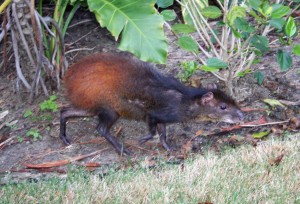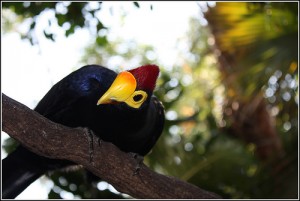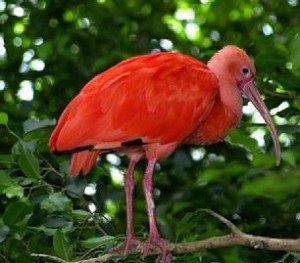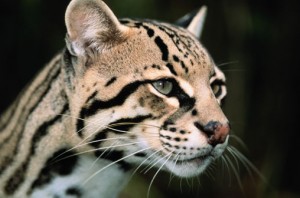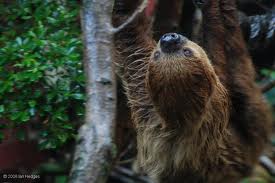Has the rainforest gone to the birds? You might think so after you meet some of our winged friends who will call the pyramid home when it re-opens May 28th.
First, let’s forage the forest floor with the Victoria Crowned Pigeon (Goura victoria). This relative of the now extinct Dodo makes its home in the Asian rainforests in Indonesia and Papau New Guinea. It is the largest living pigeon and can be just as tall as a turkey! This bluish bird has a large crest of feathers on its head that can be raised, that’s where “crowned” comes from in its name. To find food, they forage the rainforest floor for fruit, seeds and snails. Victoria Crowned Pigeons are monogamous and mate for life. They lay one single white egg each year and it’s incubated by both mom and dad. This pigeon, along with flamingos produce crop milk to feed their young.
Now, let’s soar the canopy with Crested Oropendola (Psarcolius decumannaus). These birds are native to South America and are quite small compared to the Victoria Crowned Pigeon. They will usually about 13 to 17 inches long when fully grown. The Crested Oropendola will nest in large colonies of about 100 or more to stay protected from predators. Their main food sources include: grain, seeds, fruit and nectar. In order to protect their babies, these birds weave a spherical nest made of grass and palm that can be three to six feet long!
Next, we’ll listen to the call of the Blue Bellied Roller (Coracias cyanogaster). These small, agile flyers dwell in western and central Africa, from Senegal to the southern Sudan. These social birds live in small groups of three to seven and hunt their prey by dive bombing them from about 30 feet up in the trees. You can spot the Blue Bellied Roller by its distinctive blue, black, pinkish cream and teal coloration. They get their name from the rolling pattern of flight used during courtship.
Did you know that in spite of its name, the Speckled Pigeon (Columba guinea) also called a “rock pigeon” does not need cliffs for nesting? This African pigeon is bluish-gray in coloration with cinnamon-brown on some parts of its neck, mantle and wing coverts. It gets its name from the white speckles on its wings. They breed all year long and often live in pairs, but they are also known to flock together with more than 100 others when not breeding.
Finally, we’ll take a look at the striking red patch on the chest of the Bleeding Heart Dove (Gallicolumbia luzonia). This shy bird is native to the forests of the Philippines and it spends most of its time searching the forest floor for seeds, berries, insects and other invertebrates. This dove builds its nest about three to five feet above the ground and both the male and female spend time incubating the eggs. Did you know pigeons and doves drink differently than most birds? They submerge their beak in water, suck up the water and swallow, without the need to raise their head between sips.
Check out our video featuring some of the birds you just read about!

